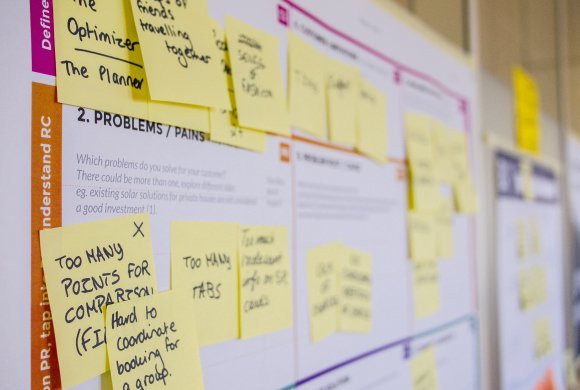Businesses in Canada are facing the biggest talent crisis since the 2008 recession, but unlike then, people are no longer competing for jobs, companies are competing for people. Businesses everywhere are struggling to maintain workforces to keep companies running. Workhuman.com, a significant player in field of employee recognition, conducted a poll of more than 3500 workers in the US, UK and Canada about employees’ connection to their jobs, companies, and what’s on the horizon. Results showed that more than 40% of workers will be looking for new jobs in the next 12 months. This exodus has been coined “the great resignation”. The survey showed that 40% of those leaving their jobs, are opting for companies that give them greater flexibility and that working parents pose the greatest flight risk. With 64% of workers claiming an overall career burnout, and 41% saying burnout has occurred most significantly in the last 2 years, life and work stress is at an all-time high.
These are sobering statistics. Employees are stressed out, burned out, struggling to manage work and home life, and demanding more from employers than ever before. If their employers can’t or won’t give them what they need, they will find it somewhere else. Businesses will need to come to terms with how they will survive this massive shift in the employment landscape. While this includes a priority focus on retention, it is equally important for companies to understand what will draw employees to them as an employer of choice in a competitive labour market.
So, what are employees looking for? In their recent ground-breaking book, Making Work Human (How Human-Centred Companies are Changing the Future of Work and the World), authors Eric Mosley and Derek Irvine say, “The future of work is human. Work is the new community. We must create connections to restore humanity in the workplace.” Mosely and Irvine propose that we are moving from a data-driven era to one where human connection will trump everything else. “As we emerge from the social isolation of the last few years, we must recognize the economic impact of loneliness is staggering. Cultures of support, inclusion, transparency and trustworthiness attract talent that is longing for psychological safety and belonging.”
Much of the current research on workforce trends affirms the concept that people are looking for more than jobs, they are seeking connection and want to work for companies that apply a more whole-person approach to employment. Here are the elements of a “human-centred” workplace.
- Build Connections and Community – “Community creates belonging,” Says Dede Henley, Principal of Henley Leadership Group, “and belonging can motivate members to elevate their performance and dedication to what they care about most. Isolation, by contrast, creates hopelessness. We can’t impact the complexities we’re facing today alone.” The idea that people can find their “tribe”, friendships, collaboration, and a sense of belonging at work is immensely attractive, especially after the isolation of the last two years. People who feel they belong to a community, work harder and better for each other. Human-centred workplaces create opportunities for community to emerge and grow.
- Invite Whole People to Work – there was a time when work was work and home was home, and the two were quite separate. In the current work climate, however, people bring their whole selves (including what’s happening at home) to work. Being able to celebrate personal milestones such as birthdays, marriages, babies, educational accomplishments and other important life events at work creates a sense of community that many workers are craving. Pets are showing up at work, kids are moving in and out of Zoom screens, work colleagues are being invited to personal celebrations. The line between personal and work is dissipating and a whole life approach in the workplace is what’s desired. People also want to be real with their leaders without fear of job repercussions. They want to be able to talk about their needs for well-being and home-life and personal struggles that impact how they are showing up at work. Employers need to adapt to this changing expectation with flexibility and strategies to support team members when they need it.
- Create Meaningful Work – while meaningful work has been a major retention driver since Google’s famous 2015 study about the 5 attributes of successful teams, its importance has grown significantly since workers have had opportunities to step back and think about what’s really important to them. People want to know that what they contribute day to day at work, matters. If meaning is missing from the work, a critical engagement factor is affected, leading to turnover. For employers, this means making sure the team is connected to the company’s mission, purpose and values, more than ever before, and helping employees see how their specific contribution is connected to the big picture.
4.Prioritize Recognition and Feedback – feedback and recognition are emerging as some of the most important factors in retention. People want to know they doing meaningful work, but they also want to feel that what they are contributing is being recognized and valued by their employers. Recognition is important at all levels – from leadership and peers. The rising popularity of peer recognition software in the last few years underscores employees’ needs to know their efforts are being noticed and acknowledged. Recognition is also connected to building community. People flourish when they are recognized and when they have opportunities and ways to recognize others they work and spend time with. Gratitude and appreciation are game changers for human-centred work environments.
- Embrace Vulnerability – Researcher, author and leadership expert, Brene Brown, has championed vulnerability as a key factor in creating healthy organizations for over 20 years. Her research and resulting written work has never been more relevant or valuable in the context of human-centred workplaces. Brown’s definition of vulnerability is “the emotion we experience during times of uncertainty, risk and emotional exposure.” This epitomizes what most of us have experience during the last two years. At times it has felt like the world is uncertain, we are all at risk and we are completely exposed, unable to hold back what is happening, both internally and externally. It feels impossible to bottle that up, put it on a shelf and go to work. Leaders who embrace vulnerability and bring their authentic selves to work create a space for others to do the same and build trust in their teams, which is a precursor to success. Brown’s research shows a tangible connection between vulnerability within organizations and business success.
Business is changing at a speed we could never have imagined a decade ago. We are living in a constant state of disruption, and the ever-increasing pace requires every organization to constantly adapt. As a society, we are not what we were prior to 2020. If we are to be successful in the next evolution of the workplace, we must consider how we have changed, and how we will adapt. Considering how your business can become more “human”, may be the next step.




